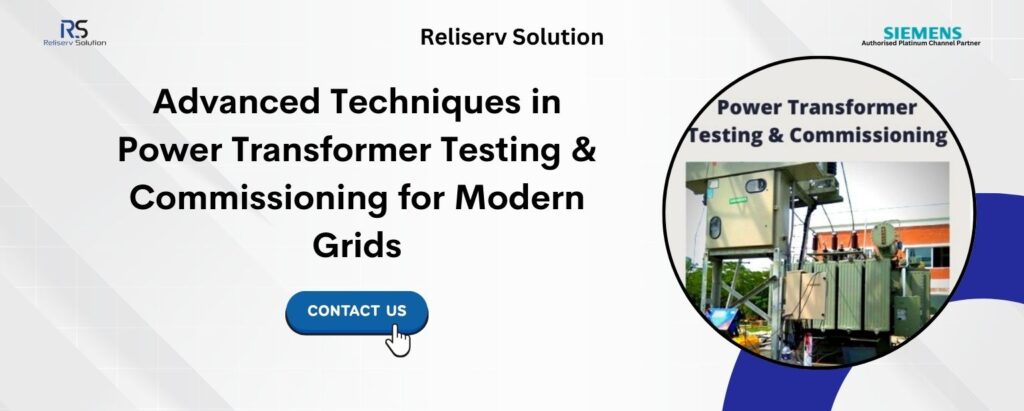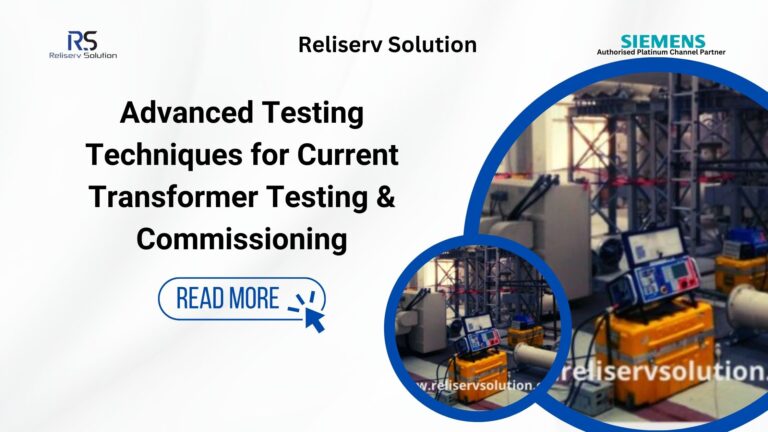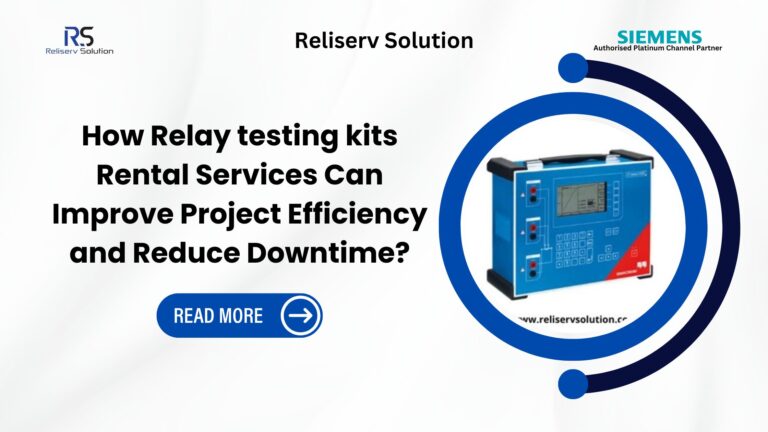Power transformers play a crucial role in ensuring a stable and efficient electrical grid. However, their reliability depends significantly on proper Transformer Testing & Commissioning. Modern power grids require advanced testing techniques to maintain operational efficiency, minimize failures, and extend equipment life.
In this blog, we will explore the best practices in Power Transformer Testing that enhance reliability. Additionally, we will analyze the importance of reducing the Power Transformer Testing Cost while ensuring high standards. Furthermore, we will discuss the role of Power Transformer Testing Service Providers in delivering reliable solutions for grid infrastructure.
Importance of Power Transformer Testing & Commissioning
Proper Power Transformer Testing & Commissioning ensures the long-term performance of power transformers. These essential electrical components handle high voltages and currents, making them prone to wear and tear. Early detection of faults through testing prevents potential failures. Moreover, modern grids require transformers to meet stringent operational standards. With the increasing electricity demand, ensuring power transformer stability is essential. Therefore, comprehensive testing plays a vital role in system protection.
One of the key benefits of Power Transformer Testing is the reduction of unplanned outages. Transformers function as the backbone of power networks, and their failure leads to costly downtime. Implementing effective testing procedures minimizes risks. Additionally, reliable Power Transformer Testing Service Providers offer advanced diagnostic techniques that improve equipment reliability.
Our team of skilled professionals specializes in the testing and commissioning of transformers across all voltage levels, including LV, MV, HV, and EHV. We provide end-to-end ETC services for both AIS and GIS substations. With advanced in-house testing equipment, we ensure efficient and precise testing to deliver high-quality results within minimal time.
Our Power Transformer Testing & Commissioning Services
Offline Testing:
- Dielectric Frequency Response Analysis (DFR)
- Sweep Frequency Response Analysis (SFRA)
- Capacitance & Tan Delta Measurement
- Transformer Turns Ratio Measurement
- Magnetic Balance & Excitation Current Testing
- Winding Resistance & Insulation Resistance Testing
- Polarization Index Measurement
- OTI & WTI Meter Calibration
- Protection Device Functionality Check (PRV, Buchholz Relay, MOG, OTI, WTI)
Online Testing:
- Partial Discharge Measurement & Localization
- Thermography Analysis
- Online Moisture Content Measurement
- Transformer Oil Testing (Screening, DGA, and Furan Analysis)

Advanced Testing Techniques for Power Transformers
Modern grids demand highly efficient transformers, which require advanced testing methods. Some of the essential Power Transformer Testing & Commissioning techniques include:
- Transformer Turns Ratio (TTR) Testing: TTR testing verifies the transformer’s winding ratios and ensures proper voltage transformation. Deviations in the turns ratio indicate internal faults or insulation degradation. This method is crucial in maintaining transformer efficiency.
- Sweep Frequency Response Analysis (SFRA): SFRA detects mechanical deformations within the transformer’s winding structure. This technique identifies shifts in winding positions and core displacements, preventing potential failures. Reliable Power Transformer Testing Service Providers often use SFRA to enhance testing accuracy.
- Dissolved Gas Analysis (DGA): DGA measures gas concentrations in transformer oil to detect internal faults. The presence of gases like hydrogen, methane, and ethylene indicates potential issues. This non-invasive testing method significantly improves transformer reliability.
- Partial Discharge (PD) Testing: PD testing identifies insulation breakdowns within the transformer. Detecting partial discharges early prevents catastrophic failures. Given the high Power Transformer Testing Cost, early detection saves significant repair expenses.
- Insulation Resistance Testing: This test evaluates the condition of transformer insulation. High insulation resistance ensures minimal leakage currents, improving overall efficiency. Testing insulation properties periodically is crucial for modern power systems.
Benefits of the Transformer Testing & Commissioning
Effective Power Transformer Testing & Commissioning provides numerous benefits, ensuring grid reliability and efficiency. Some major advantages include:
- Enhanced Operational Safety: Detecting potential failures in transformers prevents hazardous situations, ensuring personnel safety and system stability.
- Minimized Downtime: Advanced testing methods reduce unexpected outages, enhancing power system performance.
- Prolonged Equipment Lifespan: Early fault detection increases the lifespan of transformers, reducing replacement costs.
- Cost Savings: Reducing breakdown incidents significantly lowers Power Transformer Testing Costs over time.
- Improved Regulatory Compliance: Testing ensures that transformers meet industry standards and grid requirements.
Choosing the Right Power Transformer Testing Service Providers
Selecting reliable Power Transformer Testing Service Providers is crucial for achieving optimal results. The best service providers offer:
- Expert Technicians: Experienced professionals with knowledge of advanced testing techniques.
- Modern Equipment: Access to state-of-the-art diagnostic tools for precise assessments.
- Comprehensive Testing Services: Providers must cover all essential transformer tests, including TTR, DGA, and SFRA.
- Efficient Testing Protocols: Minimizing downtime while ensuring accuracy in diagnostics.
By partnering with reputable service providers, utilities can enhance transformer reliability and optimize grid performance.
Reducing Power Transformer Testing Cost Without Compromising Quality
One of the key challenges in transformer testing is managing expenses. While ensuring quality, utilities must also focus on reducing the Power Transformer Testing Cost. Some cost-effective strategies include:
- Preventive Maintenance: Regular maintenance helps avoid expensive repairs and unplanned outages.
- Automated Testing Solutions: Leveraging AI-based monitoring systems minimizes manual labor and improves efficiency.
- Data-Driven Diagnostics: Utilizing historical data improves predictive maintenance strategies.
- Training In-House Teams: Skilled internal teams reduce dependency on external service providers, optimizing costs.
- Optimized Testing Schedules: Implementing strategic testing intervals balances cost-effectiveness with reliability.
By implementing these cost-effective strategies, utilities can achieve reliable transformer operations without incurring unnecessary expenses.
Conclusion
In modern power grids, Power Transformer Testing & Commissioning ensures efficiency, safety, and reliability. Advanced testing techniques such as TTR, SFRA, and DGA play a critical role in early fault detection. Choosing experienced Power Transformer Testing Service Providers enhances transformer performance while reducing risks.
Moreover, focusing on cost-effective testing strategies minimizes the overall Power Transformer Testing Cost. Utilities can maintain a seamless power supply by prioritizing comprehensive testing, ensuring the long-term stability of electrical networks.
We have offered a wide range of services over the years, including the well-known Power Transformer Testing & Commissioning Services. The headquarters of Reliserv Solution, a Platinum Channel Partner and Siemens Authorized Supplier, are located in Mumbai, Maharashtra. Our specialist services and solutions can be used in some industries, including the panel-building industry. For information on the Power Transformer Testing Cost, please call us at +917506112097 or send an email to [email protected] if you need assistance or have any queries. Click here to view our list of all the Field Services we offer.



